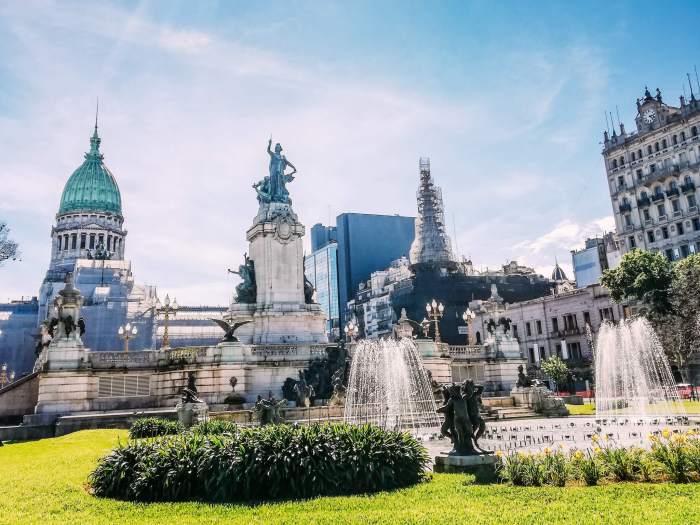Aires, a term imbued with multifaceted meanings across cultures and time periods, captivates our imagination and invites us on a journey of discovery. From its etymological roots to its profound influence on art, literature, and society, aires unveils a tapestry of human experience.
Throughout history, aires has permeated various aspects of human existence. In ancient societies, it shaped religious rituals and artistic expressions. In modern times, it continues to resonate in advertising, design, and therapeutic practices.
Etymology and Origin

The term “aires” has a rich etymological history, tracing its roots to various languages and cultures.
In Spanish, “aires” means “air” or “atmosphere,” reflecting the influence of Latin, where “aer” referred to the same concept. The word has also been adopted into English, where it has acquired a broader meaning, encompassing not only the physical air but also intangible qualities or characteristics.
Cultural Influences
The concept of “aires” has been shaped by different cultures throughout history. In ancient Greece, the element of air was associated with the gods and goddesses of the sky and wind, such as Zeus and Aeolus. In Chinese philosophy, “qi” is a vital energy or life force that permeates the universe, including the air we breathe.
Historical Context
The term “aires” has a rich history, with its usage evolving over time and across different societies.
In Ancient Greece
In ancient Greece, “aires” referred to the highest point of a mountain or hill. It was often associated with the gods and goddesses who were believed to reside on these peaks. For example, Mount Olympus, the highest mountain in Greece, was considered the home of the Olympian gods.
In Medieval Europe
During the Middle Ages, “aires” came to be used in a more general sense to refer to any elevated or open space. It was often used to describe the central square of a town or city, which was a place of public gatherings and markets.
In the Renaissance
In the Renaissance, the term “aires” began to be used to describe a musical composition in a light and lively style. This type of music was often performed at courtly events and other social gatherings.
In the Baroque Period
During the Baroque period, “aires” continued to be used in music, but it also came to be used in a more general sense to refer to a person’s manner or bearing. For example, someone who was described as having “aires” was considered to be elegant and sophisticated.
Aires are often designed to provide breathtaking views, whether it’s the cityscape or the natural landscape. A prime example of this is 432 Park Avenue in New York City, which offers panoramic vistas of Central Park and the Manhattan skyline.
This ultra-luxury residential skyscraper boasts some of the most exclusive and expensive apartments in the world, with prices reaching into the hundreds of millions of dollars. Back on the topic of aires, they can range from rooftop terraces to balconies and verandas, providing a private outdoor space for relaxation and entertainment.
In the Modern Era
In the modern era, “aires” has continued to be used in both music and in a more general sense to describe a person’s style or manner. It is also used to refer to a person’s aura or presence.
Cultural Significance

Aires, as a form of traditional music, holds significant cultural importance in various societies worldwide. It serves as a medium for expressing cultural values, beliefs, and traditions.
In many cultures, aires are closely intertwined with religious practices and ceremonies. They are used to accompany rituals, prayers, and other spiritual events, enhancing the sacredness and solemnity of these occasions.
Expression of Identity
Aires play a crucial role in shaping and preserving cultural identity. They often incorporate elements unique to a particular region or community, such as specific rhythms, melodies, and lyrics.
- For example, in traditional Andean music, aires reflect the diverse cultural heritage of the region, with each genre representing a different community or ethnic group.
- Similarly, in flamenco music from Spain, different aires are associated with specific regions and express the cultural identity of the Andalusian people.
Preservation of Cultural Heritage
Aires serve as a vital means of preserving and transmitting cultural heritage from one generation to the next.
- Through oral tradition, aires are passed down from elders to younger members of the community, ensuring the continuity of cultural practices and beliefs.
- Moreover, aires often incorporate historical narratives, legends, and stories, providing a rich source of cultural knowledge and collective memory.
Social Cohesion and Community Building
Aires foster social cohesion and community building within societies.
- They are often performed during social gatherings, festivals, and other community events, bringing people together to share cultural experiences.
- By participating in aires, individuals strengthen their sense of belonging and connection to their community.
Artistic Expression and Creativity
Aires provide a platform for artistic expression and creativity.
- Musicians and composers use aires as a medium to showcase their skills and experiment with different musical styles.
- Through aires, they can convey emotions, tell stories, and create unique and captivating musical experiences.
Literary Analysis: Aires

The use of “aires” in literature is a powerful tool for creating atmosphere, conveying emotions, and developing characters. Authors employ this technique to evoke a sense of place, time, and mood, and to shape the reader’s experience of the story.
Creating Atmosphere
The specific aires chosen by an author can establish a distinct atmosphere in a literary work. For instance, in Emily Dickinson’s poem “Because I could not stop for Death,” the speaker’s encounter with Death is described through the use of airy imagery, creating a sense of ethereal and otherworldly stillness:
“We passed the School, where Children strove
At Recess – in the Ring –
We passed the Fields of Gazing Grain –
We passed the Setting Sun –
The references to children playing, fields of grain, and the setting sun evoke a sense of the natural world and the passage of time, contributing to the poem’s somber and reflective atmosphere.
Conveying Emotions
Aires can also be used to convey emotions and shape the reader’s understanding of a character’s inner state. In Toni Morrison’s novel “Beloved,” the character of Sethe is haunted by the memory of her murdered daughter, Beloved. The use of airy imagery in the novel’s opening chapter conveys Sethe’s grief and longing:
“The air was full of chickens. Their feathers were dusty and they walked back and forth, talking to each other in low clucks. The sun was high and bright and Sethe was there, alone, surrounded by the chickens.”
The image of the chickens, with their “dusty feathers” and “low clucks,” suggests a sense of desolation and isolation, reflecting Sethe’s emotional state.
Developing Characters
Furthermore, the use of aires can contribute to the development of characters by revealing their personalities and motivations. In Jane Austen’s novel “Pride and Prejudice,” the character of Mr. Darcy is described as having an “air of haughty reserve.” This aire suggests Darcy’s pride and social status, and it shapes the reader’s initial perception of him.
As the novel progresses, however, Darcy’s aire gradually changes. He begins to show a softer side, and his haughty reserve gives way to vulnerability. This change in aire reflects Darcy’s evolving character and his growing affection for Elizabeth Bennet.
Artistic Expression
Aires is a versatile concept that has found expression in various artistic mediums, including art, music, and dance. In these realms, it serves as a powerful tool to convey emotions, establish a sense of place, and evoke memories.
Art
In the visual arts, aires can be captured through the use of color, texture, and composition. For instance, a painting depicting a serene landscape may evoke a sense of tranquility and peace through the use of soft, muted colors and gentle brushstrokes. Conversely, a painting with bold, vibrant colors and sharp lines might convey a sense of energy and excitement.
Music, Aires
In music, aires is often conveyed through melody, rhythm, and harmony. A piece of music with a slow, lilting melody and a gentle rhythm can create a sense of nostalgia or longing. In contrast, a piece with a fast, driving rhythm and a complex melody can evoke feelings of excitement or joy.
Dance
In dance, aires is expressed through the movements and gestures of the dancers. A dance with graceful, flowing movements might convey a sense of elegance and beauty, while a dance with sharp, angular movements might evoke a sense of power or aggression.
Social and Psychological Implications

Aires have profound social and psychological implications, influencing our perceptions, emotions, and behaviors. They shape cultural norms, establish social hierarchies, and create a sense of belonging or exclusion.
One significant impact of aires is on self-perception. Individuals with high aires tend to exhibit greater self-confidence, a positive self-image, and a sense of superiority. Conversely, those with low aires may experience feelings of inadequacy, insecurity, and a diminished sense of self-worth.
Social Hierarchies
Aires play a crucial role in establishing and maintaining social hierarchies. Individuals with higher aires are often perceived as leaders, experts, or authorities. They may receive preferential treatment, respect, and opportunities.
Conversely, individuals with lower aires may face discrimination, prejudice, and limited access to resources and opportunities. This can lead to social stratification and perpetuate cycles of inequality.
Aires, also known as motorhome service areas, are popular stopovers for travelers exploring the countryside. If you’re planning a trip to the picturesque coastal town of Arbroath in Scotland, there are several well-equipped aires in the surrounding area. These aires provide essential amenities such as parking, water, and waste disposal, making them a convenient option for overnight stays or extended camping trips.
Once you’ve explored the charming town of Arbroath, continue your journey with ease, knowing that aires are readily available for your next stop.
Sense of Belonging
Aires contribute to a sense of belonging and group identity. Individuals who share similar aires tend to form social groups, organizations, or communities. These groups provide a sense of connection, support, and shared values.
However, aires can also create divisions and barriers between different groups. Individuals with high aires may perceive those with lower aires as inferior or unworthy, leading to social exclusion and conflict.
Cross-Cultural Perspectives

The concept of “aires” varies across cultures, shaped by unique societal norms, beliefs, and traditions. While some commonalities exist, there are also notable differences in how it is perceived and experienced.
Aires, or open areas, can be found in various locations around the world. Whether you’re seeking breathtaking landscapes or thrilling adventures, there’s an aire for you. For those who love exploring the underwater world, consider visiting scuba diving locations.
With crystal-clear waters and diverse marine life, these destinations offer an unforgettable experience for divers of all levels. From vibrant coral reefs to ancient shipwrecks, the underwater world holds countless wonders waiting to be discovered.
In many Western cultures, “aires” is often associated with concepts of personal space, privacy, and autonomy. Individuals are expected to maintain a certain distance from others in public settings and respect the boundaries of personal space. This notion of “aires” emphasizes the importance of respecting individual rights and autonomy.
Eastern Cultures
In contrast, in some Eastern cultures, the concept of “aires” may be less clearly defined and more fluid. In these cultures, individuals may be more comfortable with closer physical proximity and less emphasis is placed on maintaining personal space. This difference in perception may stem from cultural norms that prioritize communal living and interdependence.
Non-Verbal Communication
Another cross-cultural variation in the use of “aires” is evident in non-verbal communication. In some cultures, direct eye contact is considered a sign of respect and engagement, while in others, it may be perceived as aggressive or confrontational. Similarly, the use of gestures and body language can vary significantly across cultures, influencing how “aires” is communicated and interpreted.
Contemporary Applications

The concept of “aires” continues to find relevance in contemporary society, extending beyond its traditional cultural and artistic contexts. It is increasingly being applied in various modern settings, such as advertising, design, and therapy.
In advertising, the use of “aires” can evoke specific emotions and associations in consumers. For instance, brands may employ “aires” of elegance, luxury, or nostalgia to appeal to target audiences. In design, “aires” can guide the creation of spaces and objects that convey desired atmospheres, such as tranquility, excitement, or intimacy.
Therapy
In the realm of therapy, “aires” is gaining recognition as a tool for promoting emotional well-being. Music therapy, for example, utilizes “aires” to create specific emotional states that can facilitate healing and self-expression. Additionally, some forms of psychotherapy incorporate the concept of “aires” to help individuals identify and process their emotions.
Closure

As we delve into the intricate web of aires, we gain a deeper appreciation for its enduring presence in human culture. It is a testament to the power of human creativity and the universal desire to connect with the intangible forces that shape our world.
Top FAQs
What is the origin of the term “aires”?
The term “aires” traces its roots to various languages and cultures, including Latin, Greek, and Arabic. It has evolved over time to encompass a wide range of meanings.
How has aires been used throughout history?
Aires has been employed in diverse ways throughout history, from religious rituals and artistic expressions in ancient societies to its use in advertising, design, and therapy in modern times.
What is the cultural significance of aires?
Aires holds significant cultural meaning in various societies, reflecting values, beliefs, and traditions. It is often used to express emotions, create a sense of place, and evoke memories.